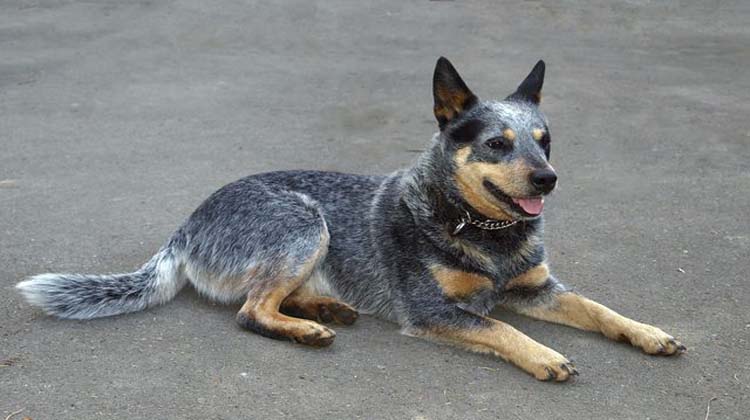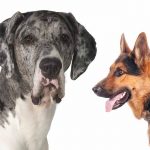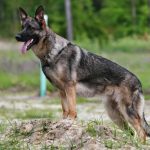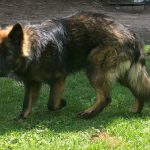The Blue Heeler German Shepherd Mix or Blue Heeler German Shepherd Mix is one of the most requested breeds in adoption centers. It has a high sales volume in pet stores, positioning itself as a first choice for the family.
If you are interested in this breed, you likely have an infinity of doubts about their characteristics. In this case, you may wonder from its Origin to the appropriate methods to provide excellent care. As a future owner, it is recommended that you pay attention to the data that can advise you.
What is a Blue Heeler German Shepherd Mix?
Contents
- 1 What is a Blue Heeler German Shepherd Mix?
- 2 The Origin of the Blue heeler german shepherd mix
- 3 Physical Characteristics of the Blue Heeler German Shepherd Mix
- 4 Health Issues
- 5 How to Train A Blue Heeler German Shepherd Mix?
- 6 How to Care For A Blue Heeler German Shepherd Mix?
- 7 What is Blue Heeler German Shepherd Mix’s Personality Like?
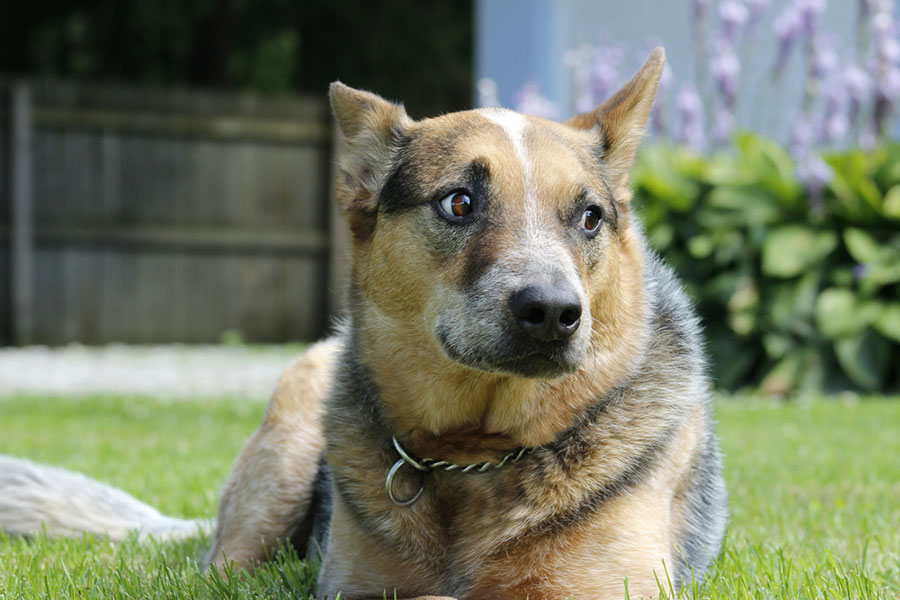
If you’ve never heard the name Blue Heeler German Shepherd Mix before, you should know that it is a curious mix. This cross is a combination of two breeds bred for herding from Australia. This fact makes him a half Australian Shepherd and Australian Cattle Dog summed up as a blue heeler.
If you wonder what the Origin of this curious mixture is, you should know that it is a total enigma. Only speculations about the factors that resulted in this crossover are found in the last thirty years’ references.
The Origin of the Blue heeler german shepherd mix
This cross is characterized by being one of the most recent in the wide repertoire of canine mixes. This fact implies that its past has few references that can provide an adequate answer to its Origin. It has one of the most curious and mysterious origins that have been reported in studies linked to the German Shepherd.
According to some studies carried out by biologists and specialists in the field, there is a strong belief in an organic mixture. Both herding breeds likely emerged in an average of thirty years due to cattle dogs breeding in Australia.
German shepherd Origin
The German Shepherd has origins dating back to 1889, with the first dog breeding program used in Germany. This project consisted of protecting the sheepdogs from enhancing their development. The result was a trained dog with guarding skills to protect flocks of sheep.
Years later, they were previously selected as vigilantes in the First and Second World Wars. This fact was a key factor in perfecting the intellectual abilities of the selected dogs. The result was favorable for the following generations’ evolutionary or adaptation process, giving as Origin to the German Shepherd.
Blue Heeler Origin
The Blue heeler is a breed of mongrel origin that emerged in 1840 as a cross between Dingoes with Collies and various sheepdogs. Unlike the German Shepherd, they were previously developed by George Elliott to enhance livestock activities.
During the 19th century, they were bred to protect the cattle of the Australian settlers. At that time, the climatic conditions were so strong that they went through an adaptation process, giving rise to a solid breed in 1980.
Physical Characteristics of the Blue Heeler German Shepherd Mix
The weight of this breed is often classified as a medium-size that ranges from 24 to 50 pounds. Females have a smaller difference in weight that usually ranges around 40 pounds. Its height varies between 17 and 23 inches, with greater possibilities of acquiring the physical characteristics of the blue heeler.
When it comes to colors, you can find them in a wide repertoire of variations ranging from black to shades of brown and white. They are also found in grayish gradients with a high probability of having blackbird fur.
Health Issues
Blue Heeler German Shepherd Mix products have a low percentage of illnesses or health problems during birth. Most of your possible conditions depend on external factors related to work.
One of the conditioning factors is herding work at an early age or in puppies. This fact results in a high incidence of hip problems such as dysplasia or damage to their joints.
Blackbird fur is one of the characteristics that could be an indicator of hearing problems or deafness.
Exercise Needs
These types of dogs have energy levels that require daily physical and mental exercise or reinforcement. In this way, you can stimulate skills related to herding and increase their intellectual capacity. They have an independent behavior that is usually flattering when running alone in your yard for your peace of mind.
Remember that running is the main exercise they require to burn the high level of calories they consume. One of his favorite activities is catching balls or flying discs in the open air.
Grooming
The hairdressing care of this mixture can be summarized in nail cuts. As for its fur, you have to brush it weekly to avoid the amount of hair everywhere.
Related: German Shepherd Chow Mix
How to Train A Blue Heeler German Shepherd Mix?
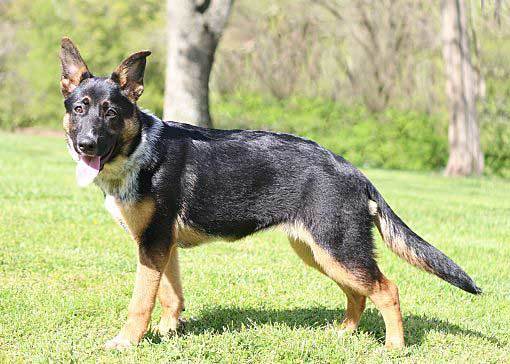
If you are the owner of a puppy, it is recommended that you incorporate the following organic methods into their training:
-
Food bowl aggression training.
This strategy involves providing her a bowl of food so that you can show her confidence. Whether you seek to strengthen their emotional ties or incorporate hygiene habits, this method can instill respect. It is also ideal when it comes to creating a sense of patience for you.
-
Food-lure training.
This method relies on rewards through snacks or any doggie treat. You have to instill in him hygiene habits, indicating the right places to relieve himself. Through positive reinforcement, you can capture his attention to guide his movements or indicate places.
How to Care For A Blue Heeler German Shepherd Mix?
The best way to prevent any conditions in your future pet is to pay attention to the following cares:
-
Encourage their physical activity.
Physical activity and adequate mental reinforcement are the keys to preserving the health of this breed. Make sure to create challenges during their training process so that you can stimulate their skills.
-
Regulate the number of calories
This breed requires at least three cups of food to balance its energy cycle and physical activity. You must make sure to divide your food into three servings a day so that you can control your appetite. For your greater peace of mind, puppies can eat food intended for both medium and large dogs.
The best way to regulate your calorie count is to check the nutrient chart to provide the proper amount. It is also important that you make sure to include 22% protein in your diet
-
Provide a proper bath.
If it is a puppy, you should make sure to bathe them once a week until after their first trimester. Once this period has passed, you should decrease the weekly frequency and incorporate a monthly habit. When they reach adulthood or two years, it is advisable to provide them with a bath every three months.
What is Blue Heeler German Shepherd Mix’s Personality Like?
The personality of the Blue heeler German shepherd mix can be summarized in the following aspects:
- Their hard-working nature allows them to be independent, and they don’t even have a problem running alone in the yard.
- They have an ideal temperament for socializing or bonding with children.
- Tolerance is one of the factors that makes them a top choice for the whole family.
- They are an extremely energetic breed and will always be willing to play with children or adults.
- They are usually affectionate and even have a protective instinct towards children and older adults.
